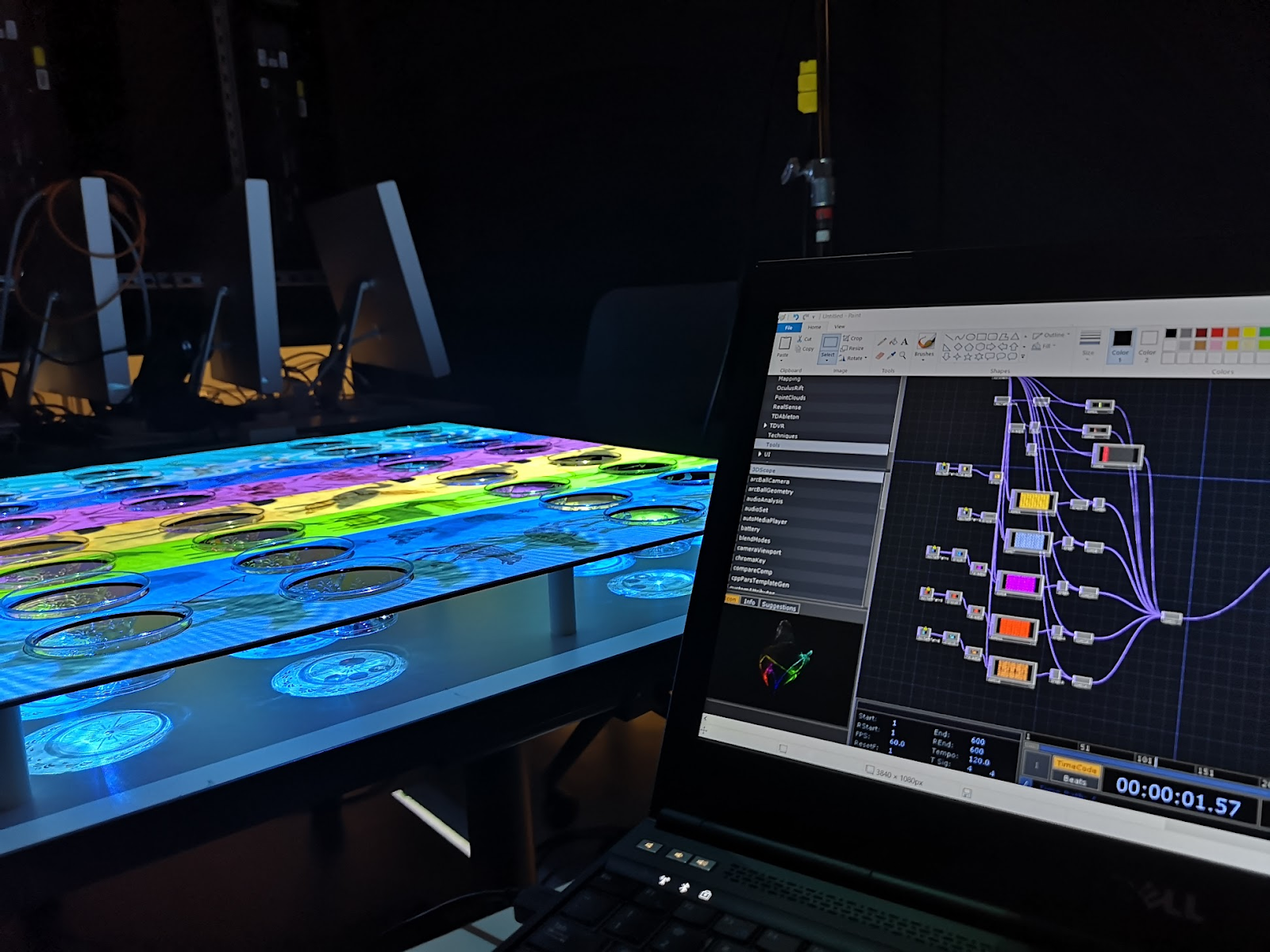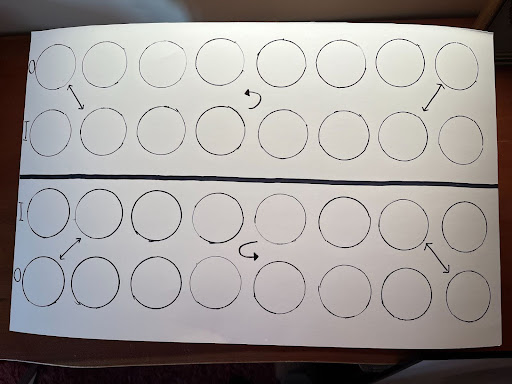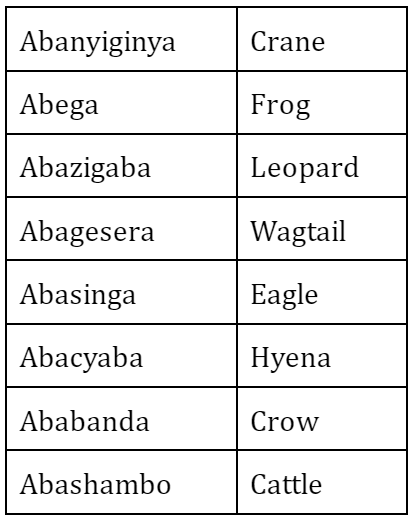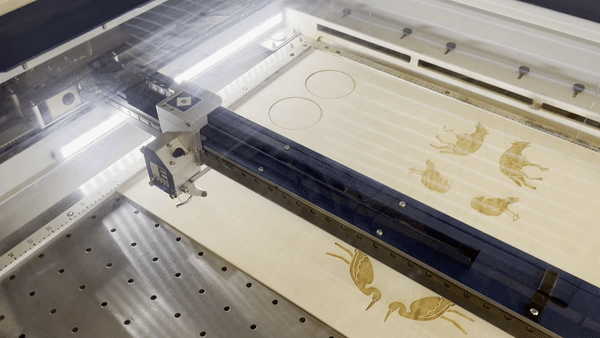Reimagining Igisoro
Project Lead, Developer
We reimagined the traditional Rwandan board game Igisoro to create an interactive educational experience. Igisoro has historically served as a bridge between Rwandan elders and youth, conveying cultural knowledge and heritage. However, to ensure its relevance for modern generations, we're adapting it using innovative technology.

Goal
Our aim is twofold:
- Develop an engaging educational platform that enables children to connect deeply with their Rwandan cultural heritage through the interactive experience of Igisoro.
- Second, we're empowering a team of interdisciplinary students by providing them with hands-on experience in skills such as laser cutting, 3D printing, and coding.
Through collaborative teamwork, we're not only creating a modernized version of Igisoro but also fostering personal and professional growth among the students involved.
Process
Exploration of Material Aspects:
We began by delving into the material aspects of Igisoro, focusing on its tangible components and gameplay mechanics. This involved studying the physical game board, seeds (game pieces), and pits (holds the seeds) to understand their tactile qualities and significance in gameplay. Through observation and analysis, we identified key elements that could be enhanced to better convey cultural heritage.
Prototyping Iterations:
We conducted two prototyping iterations to explore different approaches to enhancing Igisoro with digital media. In the first prototype, we focused on tactile experience and linear narrative immersion. This involved designing a paper board and experimenting with various types of seeds and visual cues to integrate storytelling elements into gameplay.
Paper Board Designs


Seed Variations Explored




The four different seed types explored: play-dough, pumpkin seeds, round marbles, and flat marbles.
Design Workshop and User Feedback:

We organized a design workshop involving students and peers to gather feedback on the first prototype. This workshop provided valuable insights into the effectiveness of the tactile interface, narrative integration, and overall gameplay experience. Through open-ended discussions and observation of gameplay, we identified areas for improvement and refinement.
Adjustments and Redesign:
Based on the feedback from the design workshop, we made adjustments and redesigns to refine the prototype. This involved revisiting the narrative elements, gameplay mechanics, and tactile components to better align with cultural heritage themes. We also explored alternative approaches to storytelling and gameplay interactions to enhance engagement and immersion.
Development of Second Prototype:
For the second prototype, we focused on integrating gameplay interactions with an open-ended narrative about Rwandan clans. This involved designing a wooden board with engraved clan totems and incorporating animated projections to represent each clan's territory. We also refined the tactile elements, such as the seeds and pits, to improve usability and immersion.
Clans:

We discovered eight Rwandan clans, the Abanyiginya, Abega, Abazigaba, Abagesera, Abasinga, Abacyaba, Ababanda, and the Abashambo clan. Each clan was represented by a totem, the crane, frog, leopard, wagtail, eagle, hyena, and crow. We integrated these totems in the design of the gameboard, where each clan was positioned above a row of pits representing the land each clan hails from.
Seeds:

Our team’s final seed choice were the flat glass marbles. We observed that they were easy for a user to manipulate and the pebbles prevented stacking.
Pits

Following feedback from prototype 1, pits were recessed into the board's surface for a flush fit. Clear dessert bowls with a lip were chosen, allowing light projection through the bowls to create unique shadows and augment the visual experience. Higher density 3D printed stilts would improve board stability in future versions.
Gameboard



The final prototype of the game board was crafted from thin Baltic Birch wood, emitting a natural scent that enhances the tactile experience, connecting players to Rwanda's traditional gameplay. To strengthen cultural ties, future iterations could use local Rwandan wood. Visual cues, such as directional arrows, were added to aid new users in understanding the board's layout. Exploration of inner and outer cues for differentiating board sections is suggested, as previous cues proved too narrow in interpretation.
Interactive Design: TouchDesigner:



We chose to use projection to create an intuitive and engaging way of playing Igisoro where the player progressively learns how to play the game through the intensity of the projections and soundscapes.


TouchDesigner was employed to project unique animations onto the game board, representing the territories populated by the clans. Projections respond to gameplay, with brightness increasing as pits fill, indicating the winning player's status. Soundscapes of each totem's animal noises accompany the projections, enhancing player engagement and learning.
Outcome
Through two prototypes, we explored different approaches to enhancing Igisoro with digital media. The first prototype focused on tactile experience and linear narrative immersion, while the second prototype emphasized gameplay interactions and open-ended storytelling. Our iterative design process yielded insights into effective methods for augmenting cultural heritage games.
Challenges & Learning
One challenge we encountered was integrating narrative elements seamlessly into gameplay without disrupting the natural flow. Additionally, balancing technical constraints with tactile experience posed difficulties in selecting appropriate game components. Addressing these challenges required iterative design iterations and user feedback.
Our study highlights the importance of iterative design and user feedback in augmenting cultural heritage games. We learned the value of balancing narrative immersion with gameplay interactions and the need for flexibility in storytelling approaches. By incorporating diverse perspectives and iterating on design elements, we gained insights into creating meaningful cultural heritage experiences.